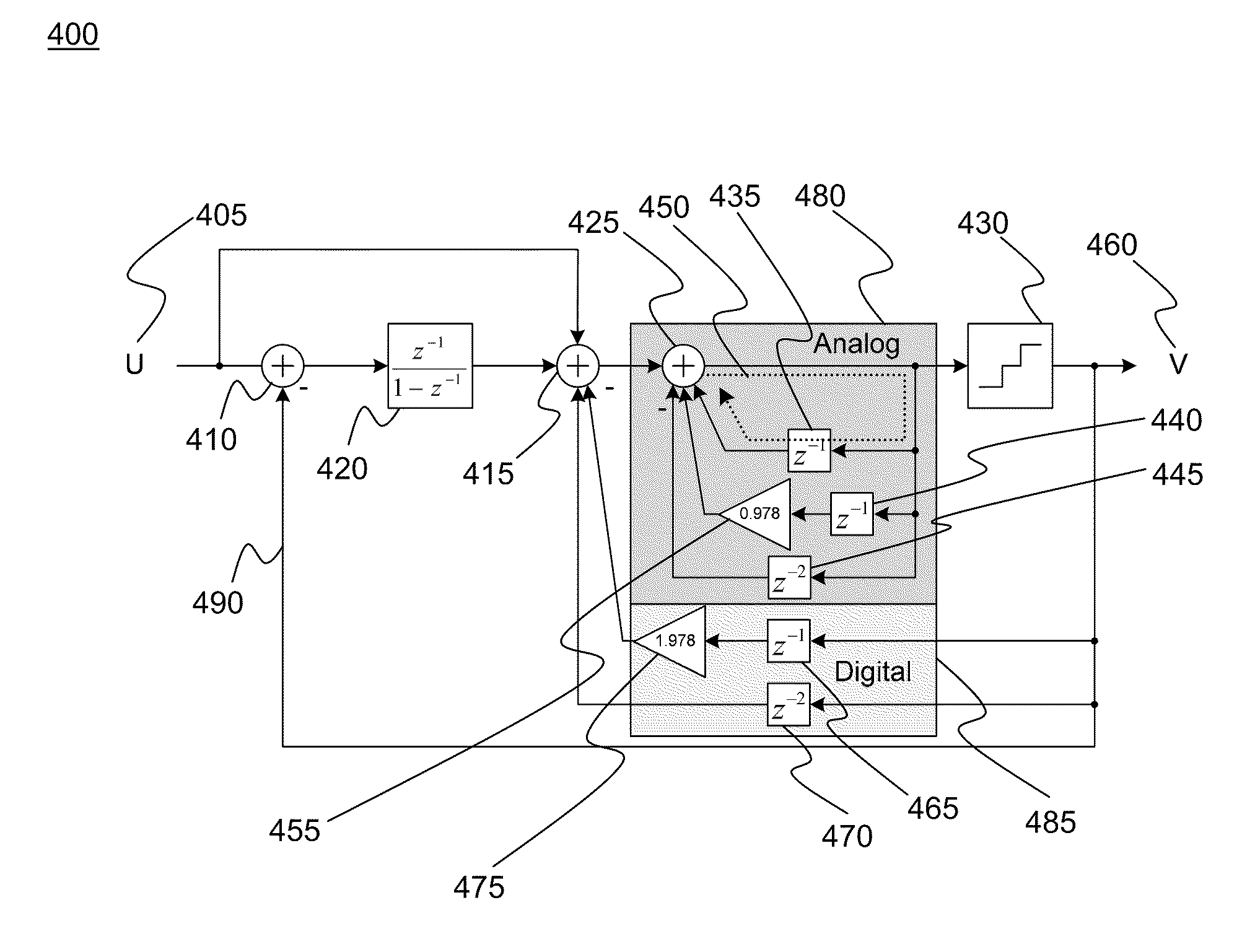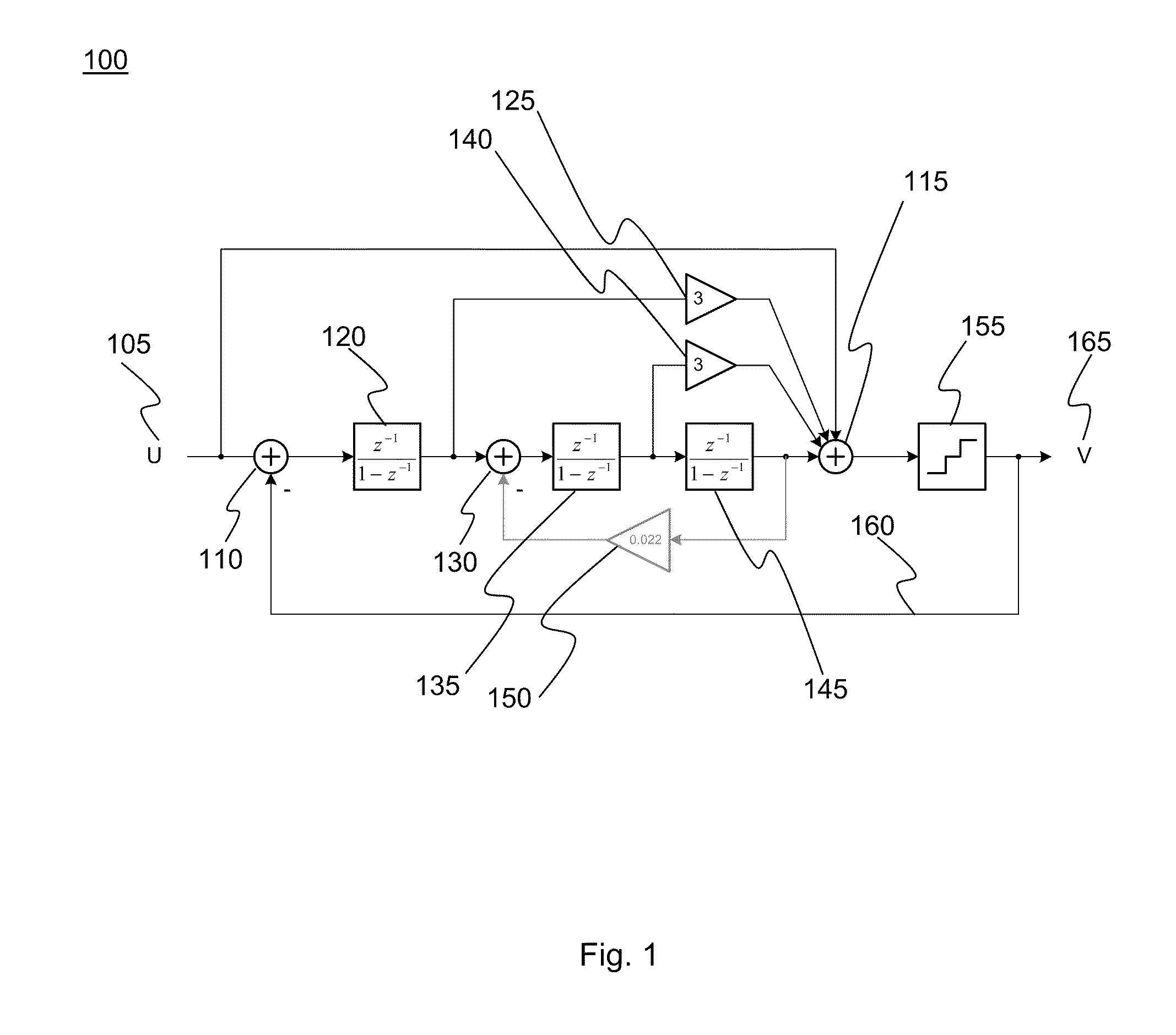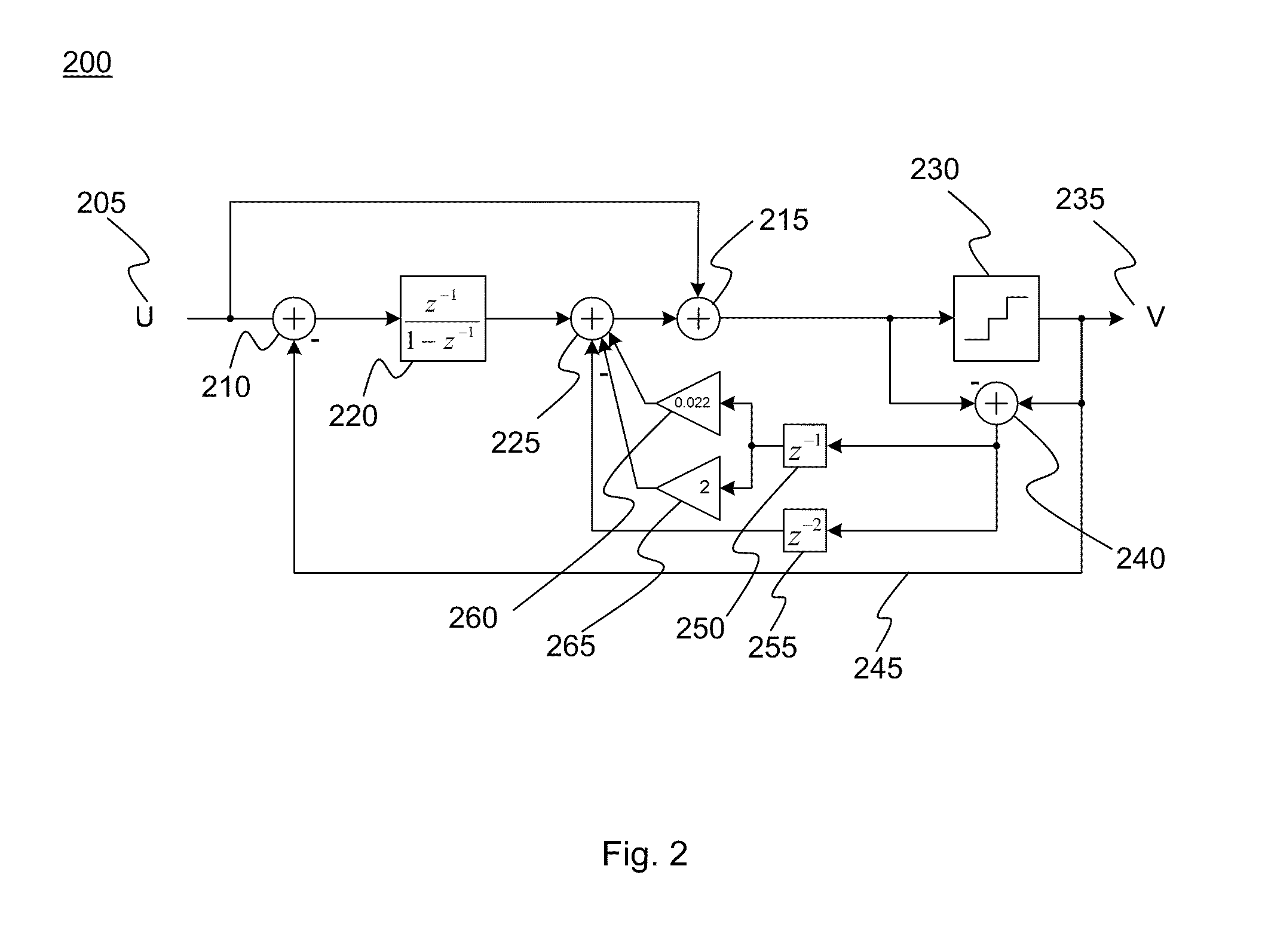Second order noise coupling with zero optimization modulator and method
a modulator and noise coupling technology, applied in the field of modulators, can solve the problems of reducing the output bandwidth, affecting the affecting the output performance of the input device, so as to improve the output performance, reduce power consumption, and improve the effect of noise coupling
- Summary
- Abstract
- Description
- Claims
- Application Information
AI Technical Summary
Benefits of technology
Problems solved by technology
Method used
Image
Examples
Embodiment Construction
The following detailed description provides example embodiments of the presently claimed invention with references to the accompanying drawings. The description is intended to be illustrative and not limiting the scope of the present invention. Embodiments are described in sufficient detail to enable one of ordinary skill in the art to practice the subject invention. Other embodiments may be practiced with some variations without departing from the spirit or scope of the subject invention.
Zero Optimization
FIG. 2 is a block diagram 200 of a third-order modulator with second-order noise coupling and zero optimization in noise coupling branches for one embodiment. Input U 205 is applied to summing nodes 210 and 215. Output of summing node 210 is applied to input of integrator 220. Output of integrator 220 is applied to summing node 225. Output of summing node 225 is applied to summing node 215. Output of summing node 215 is applied to quantizer 230 which provides output V 235, and is a...
PUM
 Login to View More
Login to View More Abstract
Description
Claims
Application Information
 Login to View More
Login to View More - R&D
- Intellectual Property
- Life Sciences
- Materials
- Tech Scout
- Unparalleled Data Quality
- Higher Quality Content
- 60% Fewer Hallucinations
Browse by: Latest US Patents, China's latest patents, Technical Efficacy Thesaurus, Application Domain, Technology Topic, Popular Technical Reports.
© 2025 PatSnap. All rights reserved.Legal|Privacy policy|Modern Slavery Act Transparency Statement|Sitemap|About US| Contact US: help@patsnap.com



